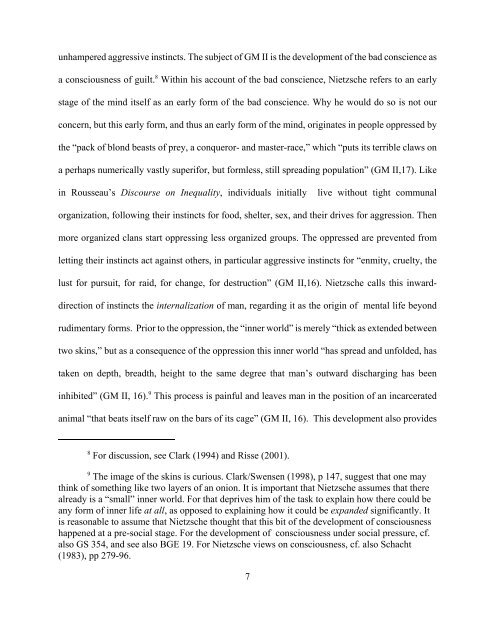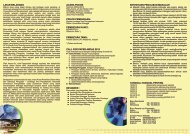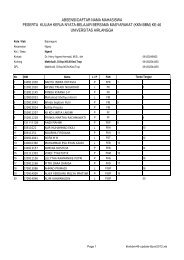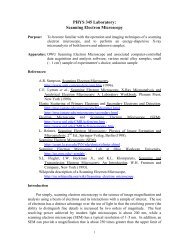Nietzsche's Naturalistic Ethics - UNAIR | E-Book Collection
Nietzsche's Naturalistic Ethics - UNAIR | E-Book Collection
Nietzsche's Naturalistic Ethics - UNAIR | E-Book Collection
You also want an ePaper? Increase the reach of your titles
YUMPU automatically turns print PDFs into web optimized ePapers that Google loves.
unhampered aggressive instincts. The subject of GM II is the development of the bad conscience asa consciousness of guilt. 8 Within his account of the bad conscience, Nietzsche refers to an earlystage of the mind itself as an early form of the bad conscience. Why he would do so is not ourconcern, but this early form, and thus an early form of the mind, originates in people oppressed bythe “pack of blond beasts of prey, a conqueror- and master-race,” which “puts its terrible claws ona perhaps numerically vastly superifor, but formless, still spreading population” (GM II,17). Likein Rousseau’s Discourse on Inequality, individuals initially live without tight communalorganization, following their instincts for food, shelter, sex, and their drives for aggression. Thenmore organized clans start oppressing less organized groups. The oppressed are prevented fromletting their instincts act against others, in particular aggressive instincts for “enmity, cruelty, thelust for pursuit, for raid, for change, for destruction” (GM II,16). Nietzsche calls this inwarddirectionof instincts the internalization of man, regarding it as the origin of mental life beyondrudimentary forms. Prior to the oppression, the “inner world” is merely “thick as extended betweentwo skins,” but as a consequence of the oppression this inner world “has spread and unfolded, hastaken on depth, breadth, height to the same degree that man’s outward discharging has beeninhibited” (GM II, 16). 9 This process is painful and leaves man in the position of an incarceratedanimal “that beats itself raw on the bars of its cage” (GM II, 16). This development also provides8 For discussion, see Clark (1994) and Risse (2001).9 The image of the skins is curious. Clark/Swensen (1998), p 147, suggest that one maythink of something like two layers of an onion. It is important that Nietzsche assumes that therealready is a “small” inner world. For that deprives him of the task to explain how there could beany form of inner life at all, as opposed to explaining how it could be expanded significantly. Itis reasonable to assume that Nietzsche thought that this bit of the development of consciousnesshappened at a pre-social stage. For the development of consciousness under social pressure, cf.also GS 354, and see also BGE 19. For Nietzsche views on consciousness, cf. also Schacht(1983), pp 279-96.7
















